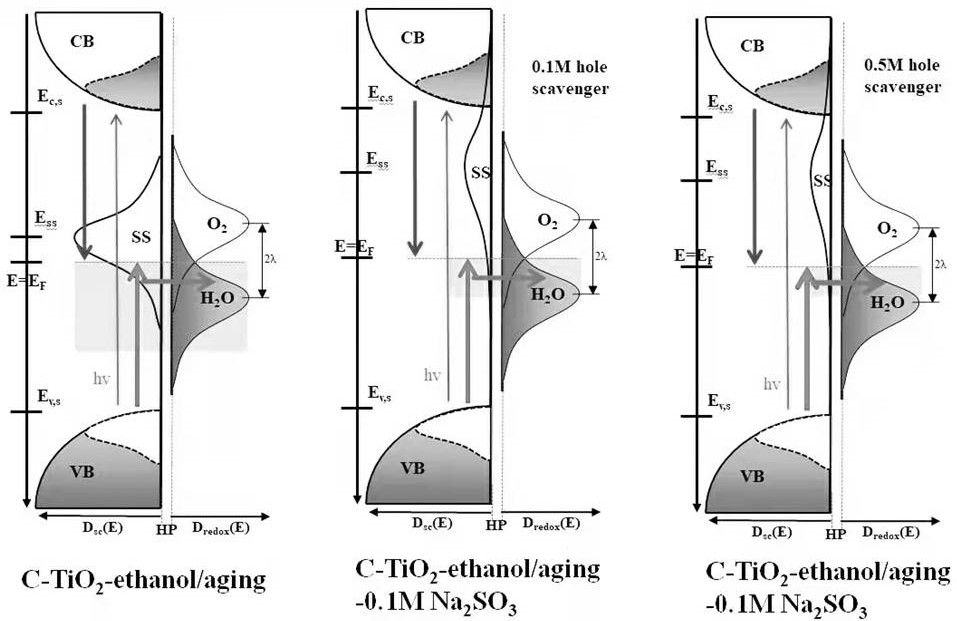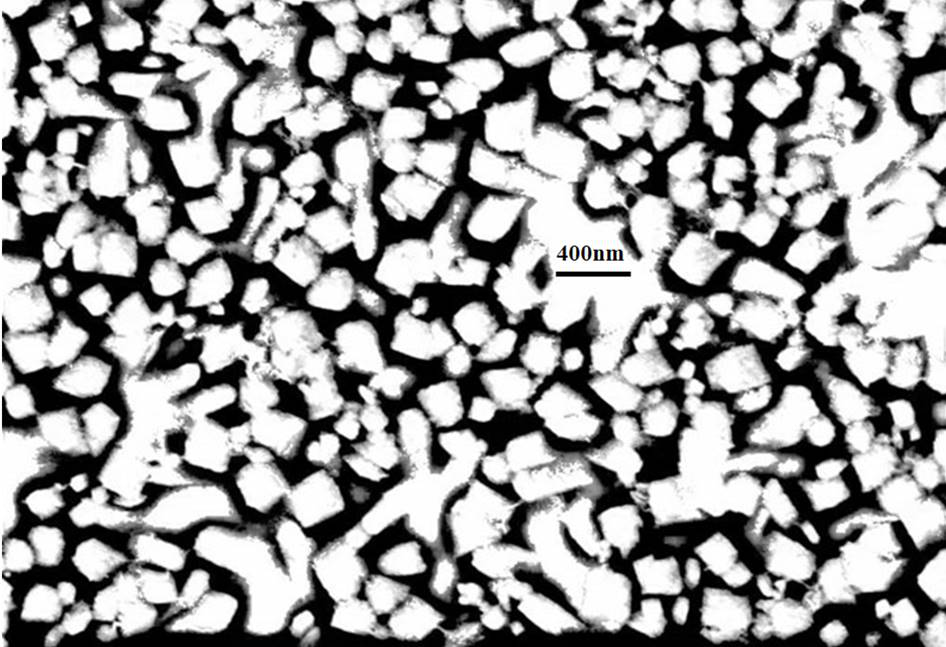Carbon-doped titanium dioxide polarized homojunction photoelectrocatalysis anode material and preparation method thereof
A photoelectric catalysis, titanium dioxide technology, applied in photovoltaic power generation, electrodes, electrolysis components, etc., can solve the problems of large overpotential and low catalytic efficiency, and achieve the effects of low cost, simple and convenient processing method, and excellent performance.
- Summary
- Abstract
- Description
- Claims
- Application Information
AI Technical Summary
Problems solved by technology
Method used
Image
Examples
Embodiment 1
[0051] Weigh 20 milliliters of deionized water and 20 milliliters of hydrochloric acid, put them into a beaker and stir, after mixing evenly, dropwise add 600 microliters of titanium isopropoxide solution, add 0.01 g of carbon powder, and stir well to obtain solution for hydrothermal reaction. Transfer the reaction solution to the reactor, and then carry out the hydrothermal reaction. The transfer volume of the hydrothermal reaction solution needs to be checked and not to be completely submerged in the conductive glass. Reserve an unsubmerged part of 2 mm × 10 mm. The temperature of the hydrothermal reaction is 160 degrees Celsius. The time is 6 hours. The reacted samples need to be washed with ethanol and deionized water respectively and dried. The high temperature sintering temperature of the sample is 430 degrees Celsius, the high temperature sintering time is 45 minutes, and the heating rate of the sample sintering is controlled at 2 degrees Celsius / min.
[0052] The vol...
Embodiment 2
[0060] Weigh 25 ml of deionized water and 25 ml of hydrochloric acid, put them into a beaker and stir, after mixing evenly, dropwise add 750 microliters of titanium isopropoxide solution, add 0.01 g of carbon powder, and stir evenly to obtain solution for hydrothermal reaction. Transfer the reaction solution to the reactor, and then carry out the hydrothermal reaction. The transfer volume of the hydrothermal reaction solution needs to be checked and not to be completely submerged in the conductive glass. Reserve an unsubmerged part of 2 mm × 10 mm. The temperature of the hydrothermal reaction is 162 degrees Celsius. The time is 7 hours. The reacted samples need to be washed with ethanol and deionized water respectively and dried. The high temperature sintering temperature of the sample is 460 degrees Celsius, the high temperature sintering time is 60 minutes, and the heating rate of the sample sintering is controlled at 2 degrees Celsius / min.
[0061] The volume ratio of eth...
Embodiment 3
[0065] Weigh 20 milliliters of deionized water and 20 milliliters of hydrochloric acid, put them into a beaker and stir, after mixing evenly, dropwise add 600 microliters of titanium isopropoxide solution, add 0.01 g of carbon powder, and stir well to obtain solution for hydrothermal reaction. Transfer the reaction solution to the reaction kettle, and then carry out the hydrothermal reaction. The transfer volume of the hydrothermal reaction solution needs to be checked and not to be completely submerged in the conductive glass. Reserve an unsubmerged part of 2 mm × 10 mm. The temperature of the hydrothermal reaction is 165 degrees Celsius. The time is 6 hours. The reacted samples need to be washed with ethanol and deionized water respectively and dried. The high temperature sintering temperature of the sample is 500 degrees Celsius, the high temperature sintering time is 65 minutes, and the heating rate of the sample sintering is controlled at 3 degrees Celsius / min.
[0066]...
PUM
| Property | Measurement | Unit |
|---|---|---|
| diameter | aaaaa | aaaaa |
Abstract
Description
Claims
Application Information
 Login to View More
Login to View More - R&D
- Intellectual Property
- Life Sciences
- Materials
- Tech Scout
- Unparalleled Data Quality
- Higher Quality Content
- 60% Fewer Hallucinations
Browse by: Latest US Patents, China's latest patents, Technical Efficacy Thesaurus, Application Domain, Technology Topic, Popular Technical Reports.
© 2025 PatSnap. All rights reserved.Legal|Privacy policy|Modern Slavery Act Transparency Statement|Sitemap|About US| Contact US: help@patsnap.com



